It’s a time I anticipate each fall, when a giant flock of geese consumes the land and sky before me, to the right and left and overhead – there is constant motion and sound, which is both exhilarating and all consuming. There I am, part of the mix with my camera, and in the moment it seems that one of the things that makes me feel most alive and most in touch with nature is being surrounded by thousands of geese, calling to provide a stadium-like sound of goose cheering.
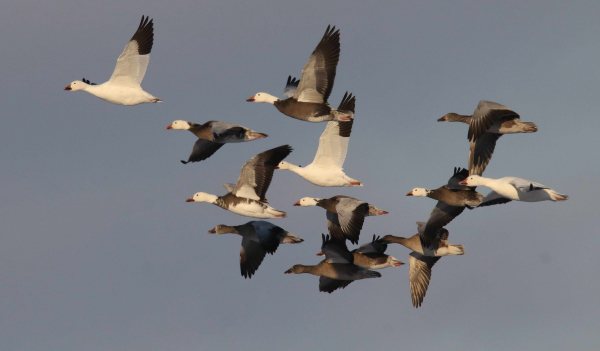
As I photographed from my mobile blind with a quarter-mile of geese before me, feeding in 4 associated areas of a harvested cornfield and flying from one area to another. Some flocks moved within 15 feet of the remote rural road on the east side of Meier’s Lake, just across the gravel road from my parked car.
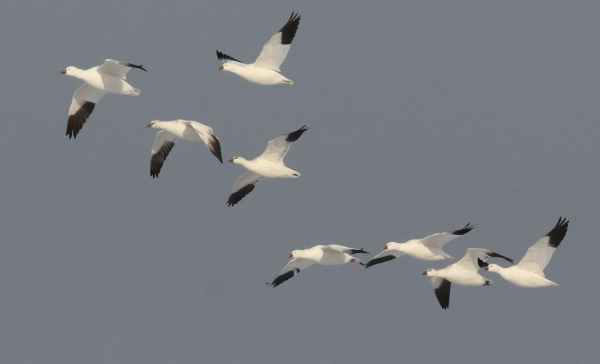
I was parked on the west side of the mass of geese with the sun at my back, photographing the 5 species of geese – mostly Snows and Ross’s Geese, with occasional flocks of Cackling, Canada, and White-fronted Geese – active as family groups, flocks of a dozen to 25, and super-flocks as hundreds took flight unanimously. What fun I had and how invested I felt as I photographed the super-assemblage of geese.
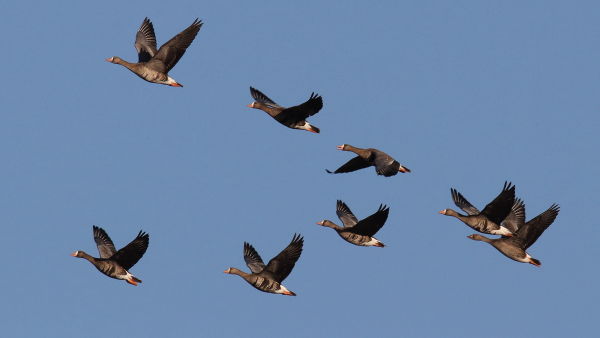
It was the first day after the first Arctic snowstorm that brought the geese to the area, and although I knew they were on the way, I was still surprised by the presence of the geese just hours after the snow stopped falling – surprised and glad. The action was constant and fast, sometimes flowing quickly as flocks of geese joined the feeding frenzy and repositioned periodically.
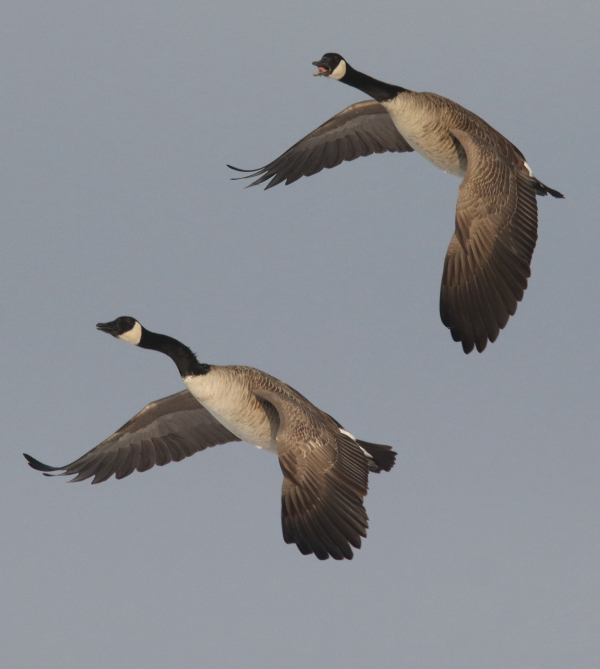
Giant Canada Geese were the largest geese on hand, showing their long necks and overall size in flight. The fast shutter speed provided a sharp image of this vocal pair flying on the edge of a large feeding flock (600mm zoom lens, f-8 aperture, 1/2500 shutter speed, ISO 800).
|
While in the moment, I find it easiest to pick out groups of geese, watching for family groups of 2 adults and their fall brood of 1 to 5 young. I also watch for standout birds, including the varied plumages of Snow Geese, while staying aware of different species passing by or landing. When I had a family group or flock of geese in focus I watched for nice positioning among the geese as they were flying. Of course, it takes a level of anticipation as the birds move quickly, and I tried to focus on the closest bird whenever possible during fast-moving flights.
I also tried to keep the widest aperture possible, in the neighborhood of f-10, even stretching it to f-14 at times, but it’s always a balancing act to try to keep a fast enough shutter speed to stop the flying actions of birds while trying to use a wider aperture. One thing that helped was to switch the ISO from my usual 400 to 800, and in this case it was a good compromise, providing ample shutter speed with a broader area in focus.
At times, for no apparent reason hundreds of geese would rise up at once creating a literal “wall of geese.” That’s just what geese do at times, and when that happens it always seems like a great opportunity to document the remarkable concentration of geese in a series of photographs. It’s exhilarating to witness, and to try to photograph the mass of geese, but when reviewing the photo outcome, it can be less than satisfying. Usually, key birds in the photo frame are out of focus – beyond the area of focus. But one thing I’ve noticed is that if you take the photos from a distance, rather than relatively close, most or all geese are within the range of focus, so it’s something to keep in mind when photographing a wall of geese taking flight.
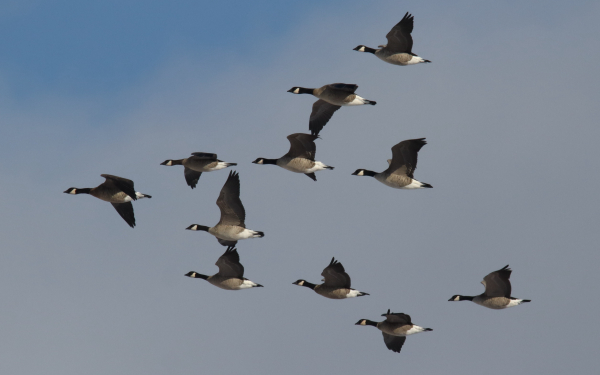
Shadows are always a concern when photographing flying birds – their wings tend to create shadows. Whether you are photographing a small flock or large flock, when shadows are a concern take lots of photos and review them to find the best images in which shadows are not a factor. One other concern is that geese are often most active late in the day, and as the sun becomes ever-lower in the sky, the quality of the light starts to yellow, which affects the natural colors of the birds.
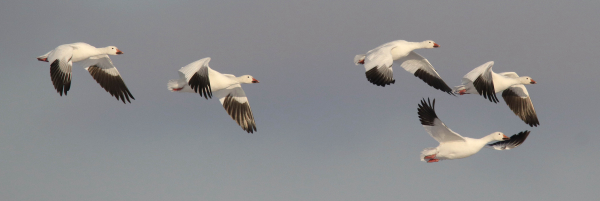
When the light yellows, it’s time to head for home – or continue photographing just for the fun of it – and isn’t that what it’s all about? Photographing geese is especially fun, and often fast-paced, and especially exhilarating when you are around concentrations of geese. Enjoy the chances you get to photograph geese and other waterfowl and flocking birds this fall. It’s prime time to do just that – Good Luck!
Article and photographs by Paul Konrad
Share your bird photos and birding experiences at editorstbw2@gmail.com